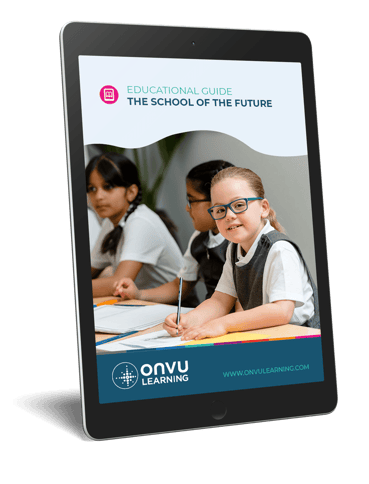- Lesson Observation
- 2 Minute Read


With schools set to deliver remote learning for some time yet, there’s an understandable desire to seek to improve this way of teaching and learning, and this has led many schools to consider whether and how to try remote lesson observation. In additional, inspection bodies such as England’s OFSTED have said that remote lesson observation may be part of their assessment of schools.
This discussion of course mirrors that around classroom lesson observation that we explored in our ‘Lesson Observation Guide’ – there’s a good reason for doing it, but how do you stop it becoming a ‘tick list’ activity (or worse, graded!) and instead allow observation to be a force for improvement?
Building on our report and experience with partner schools, we’d suggest the following 7 principles for remote lesson observation.
Research indicates that around 1 in 10 schools have been using remote observation for performance management. However, unlike traditional classroom observations, all teachers are inexperienced in teaching remotely and it is unclear at this stage whether anyone actually knows what a ‘good’ remote lesson looks like. It’s much better to use this opportunity for both observer and observee to learn from each other and identify areas for future development.
Many lesson observations used to consist of an observer looking for evidence to complete an extensive tick-list that covered a wide range of issues – all in one lesson. This meant that teachers felt the pressure to add more and more to every lesson. For remote observation, it is important not to go down the same route. The best way to do this is to agree an area to focus on – for example whether new concepts are clearly introduced and applied remotely, or whether students are engaging with remote learning.
It is so important not to apply the same expectations to remote learning as in the classroom. Whether it be technical issues affect either the teacher or students, the complex home environment that students are in, or just the new control that students have over when and how they do work, things will be different. It’s important to learn from these – here’s a list of things that went wrong for other teachers to take comfort from.
It’s also important to realise that live teaching is not always the best way to deliver remote learning despite parental pressure in some cases. Lesson observation allows you to explore the advantages and disadvantages of other methods including recorded lessons, third-party lessons from the likes of Oak National Academy, one-to-one or small group support, or guided project work.
This article has already mentioned the importance of an initial conversation before lessons are observed – but that conversation should extend well beyond the actual observation, with a longer discussion rather than just one-way feedback after the observation. The idea of lesson study is worth exploring – this involves teachers jointly planning, observing and reflecting over a longer period of time.
One of the biggest problems with any lesson observation is the ‘Hawthorne effect’ – the impact that an observer has on a class. Senior leaders in a classroom can improve behaviour but they can also lead to students refusing to talk – we gathered some, more humorous, examples of this in a previous blog. In a remote lesson, the sudden appearance of another teacher can be expected to be even more dramatic – to minimise the impact it should be shared in advance and the observer should be as inobtrusive as possible (muted and video off in a live lesson for example).
With all of the issues above, it seems clear that using technology to record remote lessons – either full lessons, the interactions between teachers and students, or student feedback, could be a very important tool in allowing both observer and observee to notice and discuss what is really happening in class.
We’ve certainly found this to be true when recording video lessons in real classrooms – explore our evidence-based case studies here.

The School of the Future Guide is aimed at helping school leaders and teachers make informed choices when designing the learning environments of the future using existing and upcoming technologies, as they seek to prepare children for the rest of the 21st century – the result is a more efficient and competitive school.
KEEP IN TOUCH WITH ONVU LEARNING AND RECEIVE THE LATEST NEWS ON EDTECH, LESSON OBSERVATION, AND TEACHER TRAINING AND DEVELOPMENT.